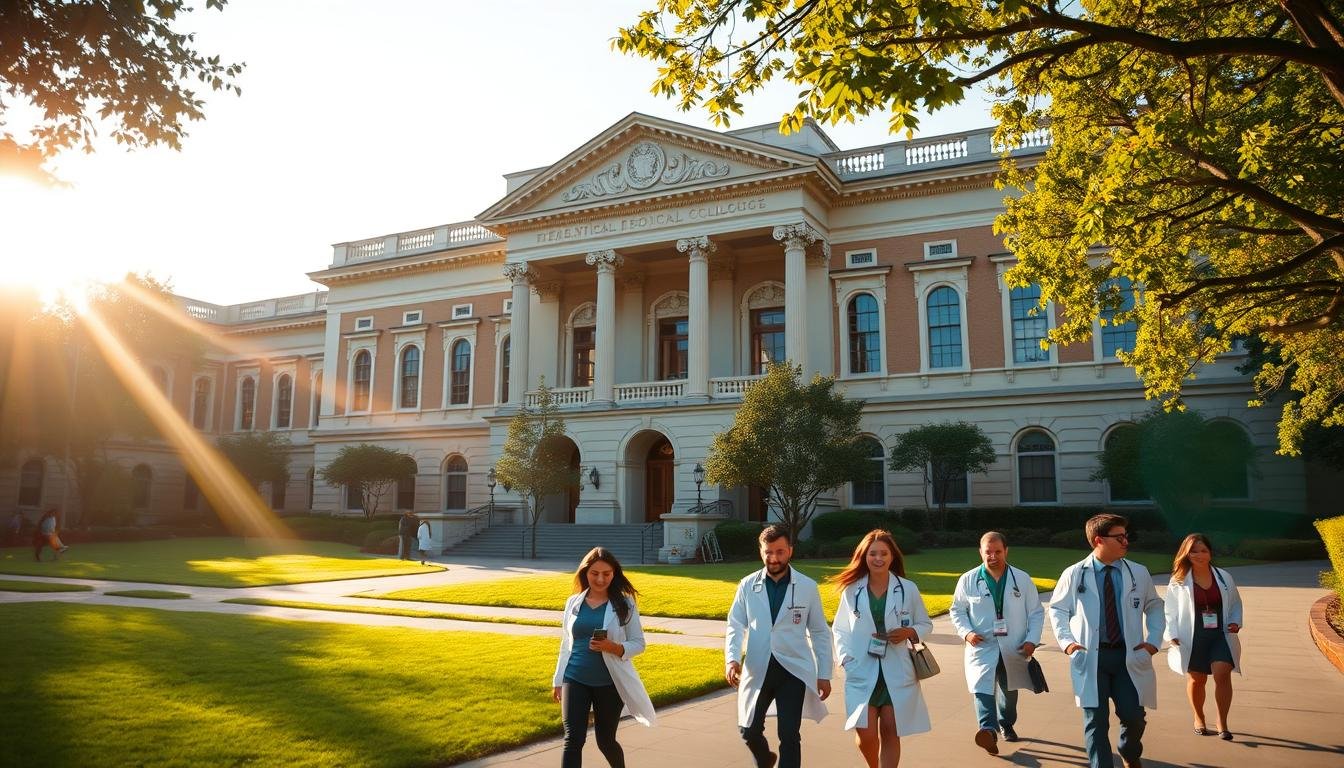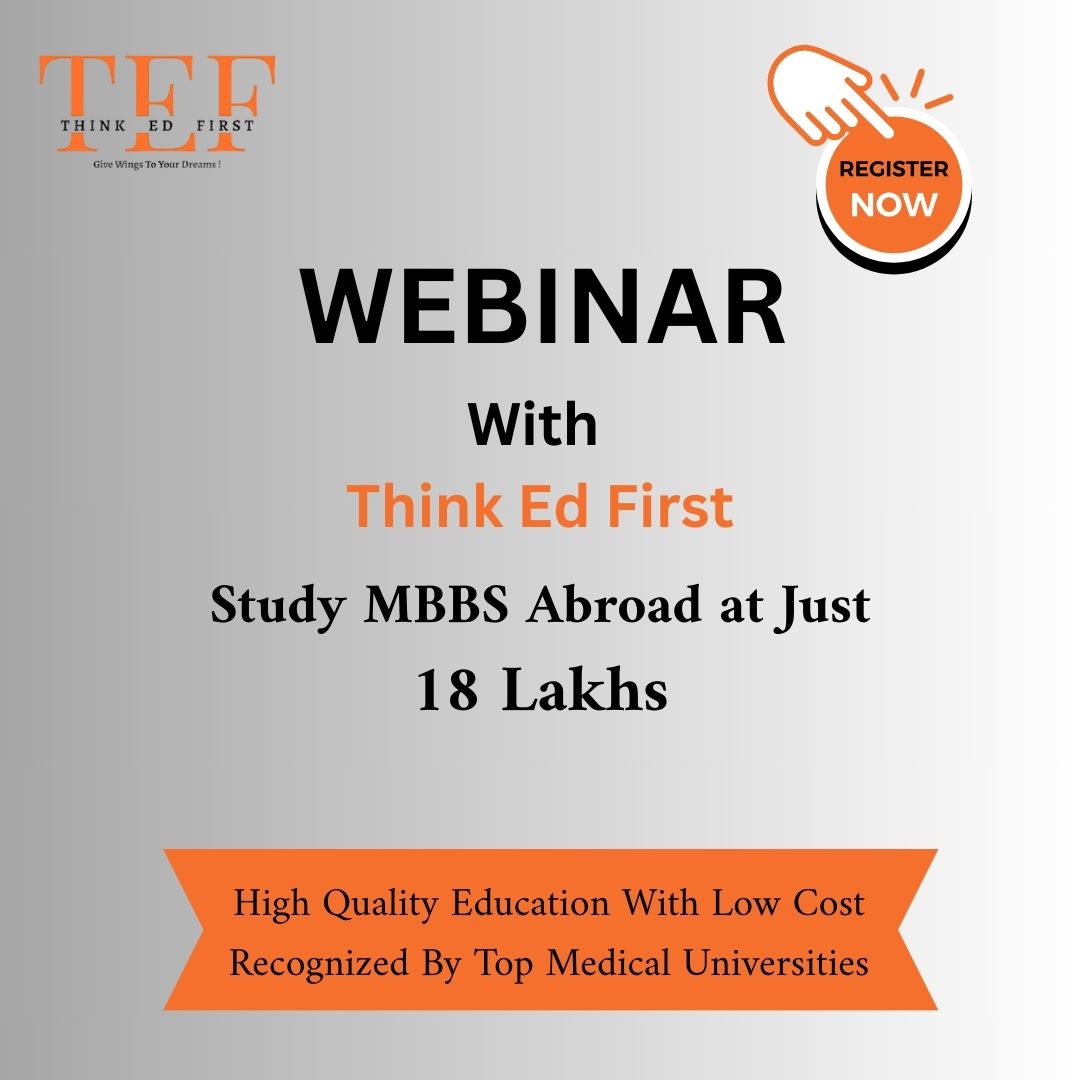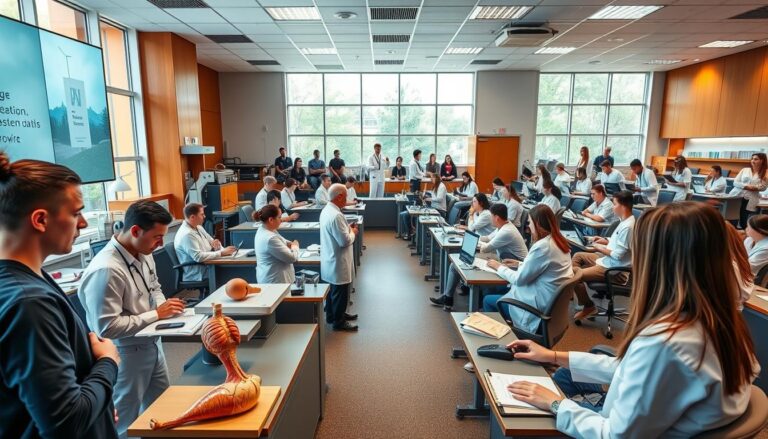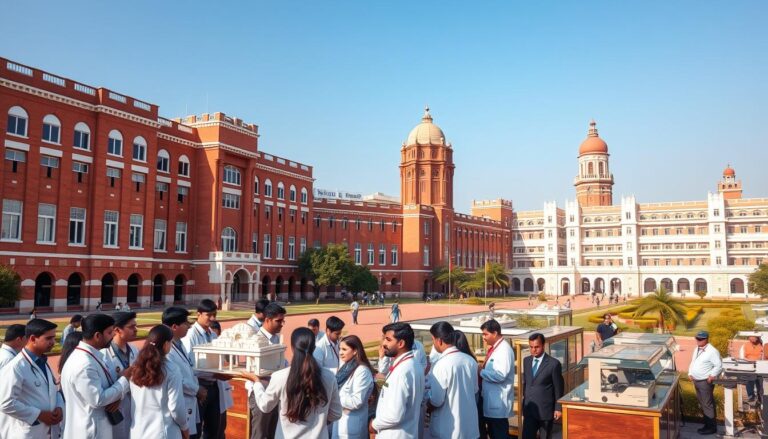Have you ever wondered why some medical colleges stand out more than others in India? The answer often lies in the unique structure and autonomy of deemed universities. These institutions play a significant role in shaping the future of medical education.
The Medical Counseling Committee (MCC) oversees central counseling for 52 institutions, offering nearly 9,887 MBBS seats. This ensures a streamlined process for aspiring doctors. Fees for these courses range from ₹10 lakhs to ₹25 lakhs annually, with additional development charges.
Top institutions like Kasturba Medical College and Jamia Hamdard are known for their state-of-the-art infrastructure and strong hospital affiliations. This guide will help you understand the admission process, eligibility criteria, fees, and how these institutions compare.
What Are Deemed Universities for MBBS?
Medical education in India has evolved with the rise of specialized institutions. Among these, deemed universities play a crucial role. These institutions are recognized by the University Grants Commission (UGC) and accredited by the Medical Council of India (MCI) or Dental Council of India (DCI). This ensures they meet high standards in education and training.
Unlike government colleges, deemed universities enjoy greater flexibility in designing their curriculum. This allows them to incorporate the latest advancements in medical sciences and research. Their autonomy also extends to fee structures, which are often higher but come with added benefits.
Many of these institutions follow a hybrid funding model. Typically, 85% of seats are reserved for management quotas, while 15% are allocated for NRI candidates. This model helps sustain their infrastructure and research initiatives.
Notable examples include the Amrita Institute of Medical Sciences in Kochi and Symbiosis Medical College for Women in Pune. These institutions are known for their state-of-the-art facilities, including simulation labs and advanced research centers.
Here’s a list of some prominent deemed universities offering medical programs:
| Institution | Location |
|---|---|
| Amrita Institute of Medical Sciences | Kochi, Kerala |
| Symbiosis Medical College for Women | Pune, Maharashtra |
| Jamia Hamdard | New Delhi |
| Kasturba Medical College | Manipal, Karnataka |
| Malla Reddy Institute of Medical Sciences | Hyderabad, Telangana |
These institutions stand out for their commitment to excellence in medical education and research. Their advanced infrastructure and flexible curriculum make them a preferred choice for many aspiring doctors.
Deemed University MBBS Admission: Key Steps
Securing a seat in a top medical college requires careful planning and understanding of the process. From qualifying the NEET exam to navigating the MCC counseling, each step is crucial. Let’s break down the key stages to help you stay on track.
NEET Qualification and Registration
The first step is clearing the NEET-UG exam with the required percentile. For General category candidates, the cutoff is 137 out of 720. Once qualified, candidates must register on the MCC portal and pay a ₹2.05 lakh deposit, with ₹5,000 being non-refundable.
MCC Counseling Process
The MCC conducts four counseling rounds: 1st, 2nd, mop-up, and stray vacancy. During registration, candidates can fill in their preferred choices. Choice locking is optional but recommended to secure your options. Upgradation is possible between rounds if seats are available.
Seat Allotment and Reporting
After seat allotment, candidates have 72 hours to complete document verification. This includes submitting NEET admit cards, mark sheets, and ID proofs. NRI candidates must provide sponsorship affidavits and proof of relationship with the sponsor.
| Counseling Round | Key Details |
|---|---|
| 1st Round | Initial seat allotment based on choices |
| 2nd Round | Upgradation and new seat allotment |
| Mop-Up Round | Filling remaining seats |
| Stray Vacancy Round | Final round for leftover seats |
By following these steps, you can navigate the admission process smoothly and secure your desired seat in a top medical college.
Eligibility Criteria for MBBS in Deemed Universities
Understanding the eligibility criteria is the first step toward a successful medical career. Aspiring doctors must meet specific standards to pursue their dreams. These requirements ensure that candidates are well-prepared for the challenges of medical courses.
To qualify, students must have completed their 10+2 education with Physics, Chemistry, Biology, and English as core subjects. A minimum of 50% aggregate marks is required for general category candidates, while SC/ST candidates need 40%. This academic foundation is essential for success in medical studies.
Age is another critical factor. Candidates must be at least 17 years old by December 31 of the admission year. For the 2025 intake, this means being born before December 31, 2008. There is no upper age limit, making it accessible for candidates of all ages.
Category-based relaxations are available for SC, ST, and OBC candidates as per the Central List. Additionally, provisions are made for Persons with Disabilities (PwD) to ensure inclusivity. Nationality clauses also apply, with specific requirements for OCI, PIO, and foreign applicants.
There is no cap on the number of attempts for NEET, allowing candidates to apply across multiple rounds. This flexibility ensures that students have ample opportunities to secure their desired seats.
| Criteria | Details |
|---|---|
| Academic Requirements | 10+2 with PCB and English, 50% marks (40% for SC/ST) |
| Age Limit | Minimum 17 years by December 31 of admission year |
| Category Relaxations | SC/ST/OBC as per Central List |
| Nationality Clauses | OCI, PIO, and foreign applicants |
| Application Rounds | No cap, multiple rounds available |
By meeting these criteria, candidates can confidently pursue their medical education and take the first step toward a rewarding career.
Pros of Choosing a Deemed University for MBBS
Choosing the right institution for medical studies can shape your career in profound ways. Deemed universities offer unique advantages that set them apart from traditional medical colleges. These institutions provide a blend of autonomy, quality education, and modern infrastructure.
Autonomy in Curriculum and Infrastructure
One of the standout features of these institutions is their autonomy. They have the freedom to design their curriculum, ensuring it aligns with the latest advancements in medical sciences. This flexibility allows them to integrate cutting-edge technologies and research into their programs.
State-of-the-art facilities, including well-equipped laboratories and simulation centers, enhance the learning experience. Affiliated hospitals provide early clinical exposure, enabling students to apply their knowledge in real-world settings.
High-Quality Education and Faculty
These institutions are known for their high-quality education and experienced faculty. Professors often have extensive backgrounds in both teaching and medical practice, offering students valuable insights. International collaborations further enrich the learning experience through student exchange programs.
Alumni networks play a crucial role in guiding students toward global opportunities, such as USMLE and PLAB preparation. This support system helps students achieve their career goals effectively.
Flexible Fee Structures
While the fee structure in these institutions is higher compared to government colleges, it comes with added benefits. Installment payment options and education loans make it easier for students to manage their finances. The investment often translates into better facilities and opportunities.
Here’s a comparison of fee structures in prominent institutions:
| Institution | Annual Fee |
|---|---|
| Kasturba Medical College, Manipal | ₹17.8 lakhs |
| Government Medical College | ₹15,000 |
Despite the higher costs, the return on investment in terms of education quality and career prospects makes it a worthwhile choice for many aspiring doctors.
Cons of Opting for a Deemed University
Opting for a private medical college comes with its own set of challenges that students should be aware of. While these institutions offer excellent facilities and education, they also have certain drawbacks that can impact your decision.
Higher Fees Compared to Government Colleges
One of the most significant concerns is the higher fee structure. Private colleges often charge 5 to 10 times more than government institutions over the 5.5-year course. This includes tuition fees, lab charges, library fees, and event costs, which can range from ₹50,000 to ₹2.5 lakhs annually.
Additional expenses like hostel and transportation can add ₹1 to ₹2 lakhs per year. These costs can be a financial burden for many families, especially when compared to the minimal fees of government colleges.

Limited Financial Aid Options
Financial aid is another area where private colleges fall short. Most institutions offer only 5% merit-based scholarships, leaving many students to rely on education loans. Bond requirements in some colleges, such as mandatory rural service clauses, can also limit future career flexibility.
During internships, stipends in private colleges are often lower than those in government institutions. This can make it harder for students to manage their finances during this critical phase of their education.
| Expense | Private College | Government College |
|---|---|---|
| Tuition Fees (Annual) | ₹10-25 lakhs | ₹15,000 |
| Hostel & Transportation | ₹1-2 lakhs | Included |
| Additional Charges | ₹50K-2.5 lakhs | Minimal |
While private colleges offer many advantages, it’s essential to consider these financial and logistical challenges before making a decision. Understanding the full picture can help you plan better and make an informed choice.
Fee Structure for MBBS in Deemed Universities
Understanding the fee structure is crucial for planning your medical education journey. Costs vary significantly across institutions and states, making it essential to break down the details. Let’s explore the key aspects of fees to help you make an informed decision.
Most colleges offer both annual and one-time payment options. Opting for a one-time payment often comes with discounts, reducing the overall cost. For example, institutions like Kasturba Medical College in Manipal provide this flexibility, helping families manage their finances better.
NRI quota costs are another important factor. These fees range from $30,000 to $106,000, depending on the institution. However, forex fluctuations can impact the final amount, so it’s wise to plan accordingly. Colleges like DY Patil in Pune and SRM in Chennai are popular choices for NRI candidates.
Hidden charges are often overlooked but can add up quickly. These include dissection kits, insurance, and white coats, which are essential for medical students. Always inquire about these additional costs to avoid surprises later.
Refund policies are another critical detail. Most colleges offer an 80% refund if you withdraw before classes start. This policy provides some financial security if plans change unexpectedly.
Here’s a state-wise comparison of fees to give you a clearer picture:
| State | Fee Range (Annual) |
|---|---|
| Karnataka | ₹16.09 lakhs – ₹25.25 lakhs |
| Maharashtra | ₹17.00 lakhs – ₹30.00 lakhs |
| Tamil Nadu | ₹19.50 lakhs – ₹30.00 lakhs |
| Delhi | ₹16.00 lakhs – ₹25.00 lakhs |
By understanding these details, you can better plan your finances and choose the right institution for your medical education.
Top 10 Deemed Universities for MBBS in India
India is home to some of the most prestigious medical colleges that have shaped the careers of countless doctors. These institutions are known for their advanced infrastructure, experienced faculty, and excellent placement records. Let’s explore the top choices for aspiring medical students.
Kasturba Medical College (Manipal & Mangalore)
With a 68-year legacy, Kasturba Medical College is often compared to AIIMS in terms of infrastructure and facilities. The Manipal campus offers 250 seats, while Mangalore also provides the same capacity. Both campuses feature state-of-the-art labs, simulation centers, and affiliated hospitals for hands-on training.
Students benefit from a 94% internship absorption rate, ensuring a smooth transition into their medical careers. The annual tuition fee is ₹25.37 lakhs, reflecting the high-quality education and facilities provided.
Jamia Hamdard (Delhi)
Jamia Hamdard stands out for its integration of Unani medicine into its curriculum. Located in Delhi, this institution offers a unique blend of traditional and modern medical practices. The campus includes advanced research centers and a well-equipped hospital for clinical exposure.
With a strong focus on holistic healthcare, Jamia Hamdard prepares students for diverse medical challenges. The institution’s placement stats are impressive, with most graduates securing internships in top hospitals.
Symbiosis Medical College for Women (Pune)
Symbiosis Medical College for Women is a pioneer in women-centric medical education. Located in Pune, it specializes in OBGYN and offers 150 seats annually. The college emphasizes empowering women in the medical field through specialized training and mentorship programs.
Students gain access to advanced simulation labs and research facilities. The annual fee is ₹10 lakhs, making it a relatively affordable option for quality education.
Amrita Institute of Medical Sciences (Kochi)
Amrita Institute of Medical Sciences is renowned for its robotic surgery training modules. Located in Kochi, it offers 150 seats and boasts a 400-acre campus with a super-specialty hospital. The institution focuses on cutting-edge medical technologies and research.
With a 90% passing percentage, Amrita ensures its students are well-prepared for their careers. The annual tuition fee is ₹25 lakhs, reflecting the advanced facilities and training provided.
Counseling Rounds and Seat Allotment
Navigating the counseling rounds is a critical step in securing your medical seat. The process involves multiple rounds, each with specific rules and opportunities. Understanding these details can help you make informed decisions and increase your chances of success.
The first round of counseling allows candidates to lock their choices. If you’re unsatisfied with your seat allotment, you can opt for a free exit before the second round. This flexibility ensures you have another chance to secure a better option.
The mop-up round is designed for candidates who didn’t report in previous rounds. It’s a final opportunity to secure a seat before the process concludes. Additionally, spot admissions through institutional quotas are available for eligible candidates.
Analyzing the seat matrix from previous years can provide valuable insights. This strategy helps you understand seat availability and plan your choices effectively. Always stay updated with round-wise vacancy publication schedules to make timely decisions.
| Counseling Round | Key Details |
|---|---|
| First Round | Initial seat allotment with free exit option |
| Second Round | Upgradation and new seat allotment |
| Mop-Up Round | Final round for non-reporting candidates |
| Stray Vacancy Round | Spot admissions through institutional quotas |
By understanding these rounds and their details, you can approach the NEET counseling process with confidence. Proper planning and strategy are key to securing your desired seat in a top medical college.
Documents Required for MBBS Admission
Preparing the right documents is a crucial step in the admission process. Proper documentation ensures a smooth experience and helps candidates meet eligibility criteria. Let’s break down the key requirements to help you stay organized.
For NRI candidates, specific details must be submitted. These include a sponsor’s passport copy and a relationship affidavit. These documents verify the sponsor’s identity and their connection to the candidate. Notarized translations are required for vernacular documents, ensuring clarity and authenticity.
Medical fitness certificates are mandatory for all candidates. These must be issued by an MCI-registered practitioner and confirm the candidate’s physical fitness. Gap year affidavits are also necessary for students who took a break after their 12th grade. These affidavits explain the reason for the gap and must follow a specific format.
Digital submission protocols are becoming increasingly common. Candidates must ensure scanned copies of all documents meet the specified size and format requirements. Passport-size photographs with the correct DPI are also essential. Special provisions exist for CBSE/ICSE and state board students, so verify the details for your specific board.
| Document Type | Details |
|---|---|
| Sponsor’s Passport | Required for NRI candidates |
| Relationship Affidavit | Notarized proof of sponsor-candidate relationship |
| Medical Fitness Certificate | Issued by an MCI-registered practitioner |
| Gap Year Affidavit | Explains reasons for the gap year |
| Digital Documents | Scanned copies in specified format and size |
By gathering these documents in advance, candidates can streamline the admission process. For more information on the medical fitness certificate, visit our detailed guide. Proper preparation ensures a hassle-free experience and increases your chances of securing a seat.
Conclusion
Making the right choice for your medical education can shape your future career. Balancing budget and infrastructure is crucial when selecting a medical college. Visiting campuses beforehand helps you assess facilities and environment firsthand.
Stay updated on MCC counseling timelines, especially during July-August. Your NEET percentile plays a key role in determining your options. Research thoroughly and compare colleges to make an informed decision.
For personalized guidance, consider booking a counseling session. If you’re exploring international options, check out our guide on medical universities in China for more insights.





